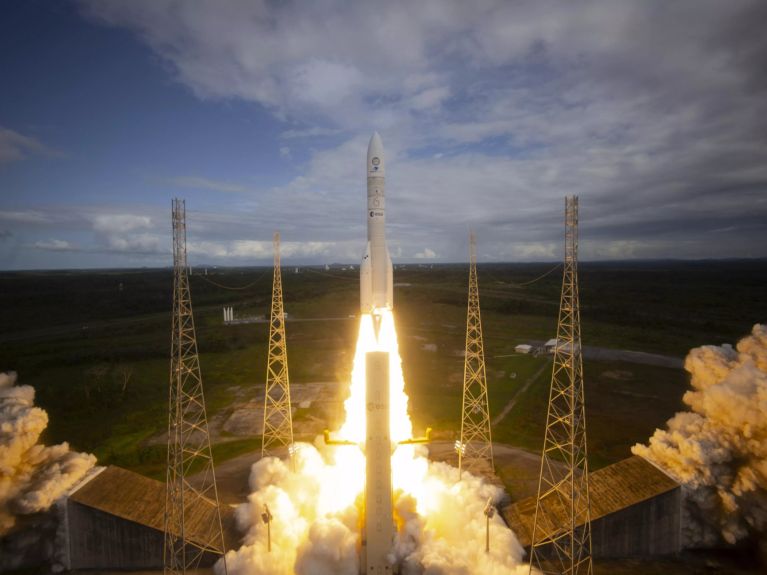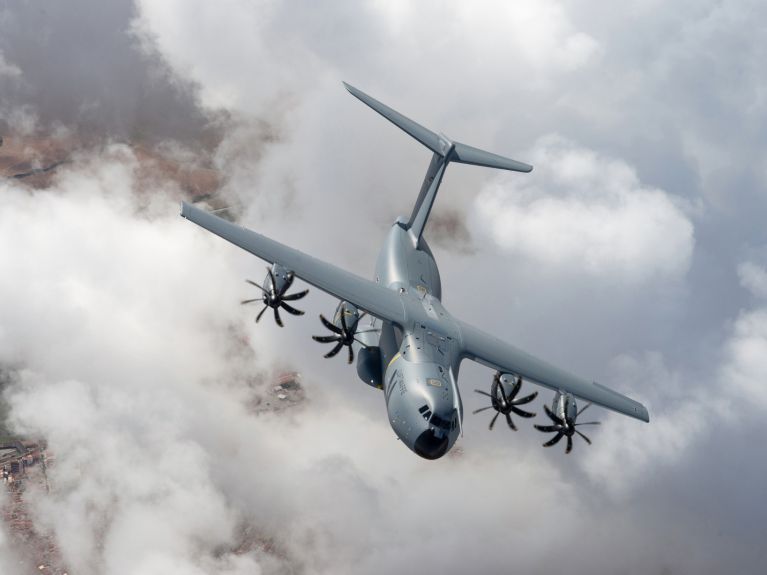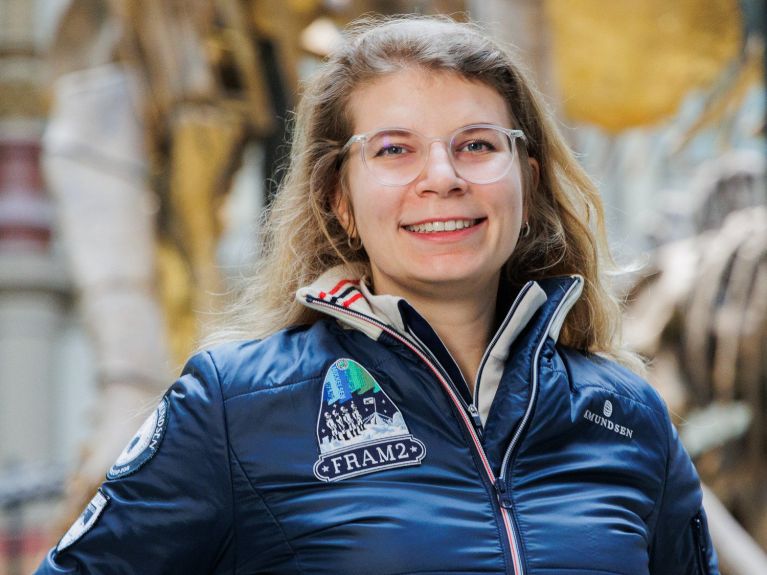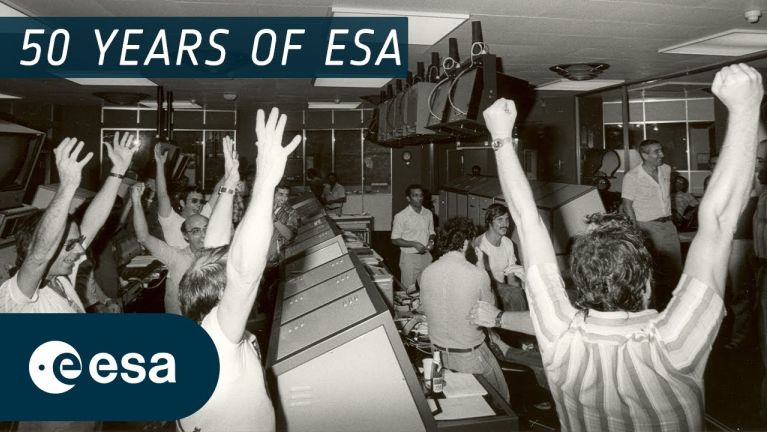Germany’s path into space
How Germany’s aerospace industry is becoming a key player in both the civilian and military sectors.

Andøya, 30 March 2025. At the northern edge of Europe, the sky is grey, the coastline rugged, and the ground frozen. And yet here, on a small island off the Norwegian coast, a new era in German spaceflight is beginning. True, the Spectrum rocket launched from the spaceport there crashes into the sea after just 30 seconds. But for the Bavarian start-up Isar Aerospace, which built the Spectrum, the launch is still a major success: for the first time, a launch vehicle has lifted off from continental European soil – Germany’s path into space is getting shorter.
Dieses YouTube-Video kann in einem neuen Tab abgespielt werden
YouTube öffnenThird party content
We use YouTube to embed content that may collect data about your activity. Please review the details and accept the service to see this content.
Open consent formGermany’s aerospace industry is experiencing a boom – in both its civilian and military branches. Established companies and research institutes are expanding, and more and more start-ups are entering the field with pioneering spirit.
Strategic key technologies of global importance
The technological foundation of the sector is of vital importance. It encompasses virtually all strategic key technologies – from drone systems to satellite construction. Its capabilities have also become indispensable for equipping the Bundeswehr and its allies amid global geopolitical tensions.
This includes the development of the European satellite constellation IRIS² for sovereign and resilient communications, for example. With around 300 small satellites, the constellation is to become a European counterpart to the US Starlink system – an orbital network that can operate independently of other world powers. German companies such as OHB from Bremen and Airbus Defence and Space, based in Munich, are directly involved. The creation of a comprehensive air defence system is also seen as a central challenge when it comes to protecting Europe against attacks. Here, the IRIS-T missile defence system from Diehl has a crucial role to play: it is now becoming established as the European standard for intercepting threats in the so-called medium-altitude layer – between six and 35 kilometres – exactly where current threat scenarios are most likely.

An economic driver and export success
No surprise, then, that Germany’s aerospace companies are flying high. Industry revenue rose from 46 to 52 billion euros in 2024, according to the German Aerospace Industries Association (BDLI). Employment figures increased from 115,000 to 120,000. The outlook is very strong.
And it’s not just spaceflight and air defence on the rise: civil aviation is also clearly recovering from the pandemic-related slumps of recent years. Many airlines are renewing or expanding their fleets. At the world’s most important aviation trade fair – the Paris Air Show – Airbus achieved a historic order record in June 2025: the European aerospace group, in which Germany and France are key stakeholders, secured 250 firm orders and preliminary agreements for jets and cargo aircraft. Customers include Riyadh Air from Saudi Arabia, Vietjet from Vietnam, and LOT, Poland’s national airline.
This highlights the international strength of Germany’s aerospace sector, which has an export ratio of nearly 70 per cent. “Aerospace is a future-oriented industry in Germany. Our companies are growing steadily – against the general trend – and making a vital contribution to Germany’s technological independence and global competitiveness,” says BDLI president Michael Schöllhorn.

Germany’s role in the ESA
Germany is a pillar of the European Space Agency (ESA, whose 23 members recently celebrated its 50th anniversary. Accounting for more than 20 per cent of the agency’s total budget, Germany is its largest contributor – ahead of France – and also a strong partner in the International Space Station (ISS). Several German astronauts have been to space, including Thomas Reiter, Alexander Gerst, and most recently – as a scientist – Rabea Rogge.
Many key ESA institutions are located in Germany: the European Space Operations Centre (ESOC) in Darmstadt, the European Astronaut Centre (EAC) in Cologne, the Columbus Control Centre of the German Aerospace Center (DLR) in Oberpfaffenhofen, and the test site for rocket propulsion in Lampoldshausen.
Thanks to the expertise of these institutions, complex missions like the JUICE Jupiter moon orbiter are managed, new launch systems like Ariane 6 are tested – and future crewed spaceflights are being prepared. The ESA’s “geo-return” principle – which ensures that member states receive industrial contracts proportional to their contributions – means German industry directly benefits from these investments.
Dieses YouTube-Video kann in einem neuen Tab abgespielt werden
YouTube öffnenThird party content
We use YouTube to embed content that may collect data about your activity. Please review the details and accept the service to see this content.
Open consent formInnovation hub Bavaria
The centre of Germany’s aerospace industry is Bavaria, particularly the Greater Munich area. Heavyweights such as Airbus and engine manufacturer MTU are based here – as are a growing number of dynamic firms currently reshaping the market, such as drone maker Quantum Systems and the AI start-up Helsing.
One particular focus across the industry lies on supporting so-called “New Space” start-ups. For example, Isar Aerospace Technologies – headquartered in Ottobrunn near Munich – is developing launch vehicles to transport smaller satellites into orbit at significantly lower cost. The new NATO Innovation Fund is among its backers.
Dieses YouTube-Video kann in einem neuen Tab abgespielt werden
YouTube öffnenThird party content
We use YouTube to embed content that may collect data about your activity. Please review the details and accept the service to see this content.
Open consent formNew players on the launchpad
Other companies are fuelling the industry’s momentum: Rocket Factory Augsburg is working on the RFA One, a modular rocket system designed for scalable production. HyImpulse is currently testing hybrid engines with reduced explosion risk. Exolaunch in Berlin specialises in transporting and integrating small satellites, while OroraTech provides early-warning systems for wildfires via its microsatellites – and is now part of Europe’s Copernicus Earth observation programme.
To maintain this momentum, the BDLI is calling for long-term political support and targeted investment in spaceflight locations and innovation networks. This would help German spaceflight to remain internationally competitive for years to come – while also making a pivotal contribution to Europe’s strategic independence.





